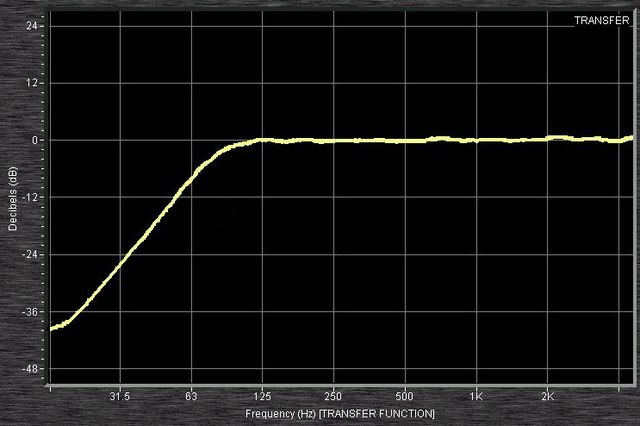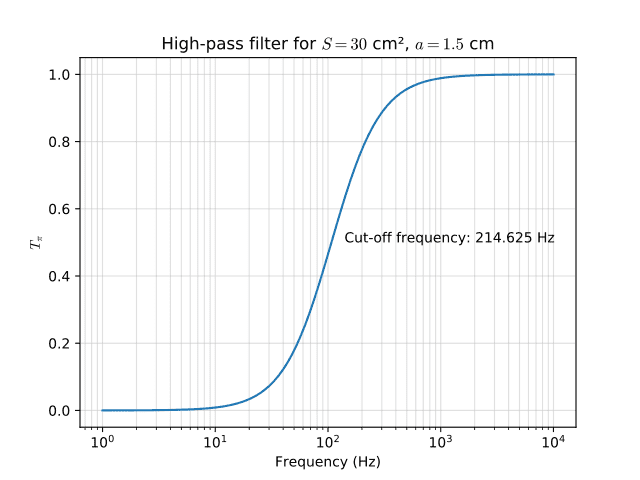Yo, fellow music enthusiasts! Have you ever wondered what a high-pass filter in audio is? Look no further ’cause we’ve got your back! In this post, we’ll dive into the world of high-pass filters and why they’re so important in audio production. We’ll break down how they work and when you should use them. We’ll even explore different types to help you find the perfect one for your mix.
And hey, you might say, “High-pass filters are like the bouncers of audio—they only let the cool high frequencies in!” So, let’s get started and unlock the secret to cleaner mixes and improved audio clarity.
What is a high-pass filter in audio? A high-pass filter in audio is a processing tool that removes low-frequency content below a specified cutoff point, allowing only the higher frequencies to pass through.
What is a high-pass filter?
A high-pass filter (HPF) in audio is an equalization tool that attenuates all frequencies below a set point, effectively removing low frequencies while allowing high frequencies to pass through. In other words, high-pass filters eliminate low-frequency audio while passing high-frequency signals to amplifiers, speakers, signal paths, or other audio components.


High-pass filters are used in audio systems to allow high frequencies to get through while filtering or cutting low frequencies, such as with small speakers to remove bass. They can help eliminate issues like the rumble of an air conditioning system or low-frequency vibrations from someone walking across a wooden floor when recording in a studio or theater.
AKAI Professional MPK Mini MK3

AKAI Professional MPK Mini MK3
What are high-pass filter characteristics and applications?
The following data table provides an overview of the key characteristics and applications of high-pass filters in audio. This table shows the different types of high-pass filters, their cutoff frequency, steepness, and common use cases in audio production.
By understanding the various high-pass filter types and their characteristics, audio engineers can make informed decisions on which filter best suits their specific audio processing needs.
| Filter Type | Cutoff Frequency | Steepness (dB/Octave) | Common Use Cases |
|---|---|---|---|
| Butterworth | Variable | 12, 18, 24 | General audio filtering, smooth frequency roll-off |
| Chebyshev | Variable | 12, 18, 24, 36 | Aggressive filtering, sharper frequency roll-off |
| Bessel | Variable | 12, 18, 24 | Linear phase response, minimal phase distortion |
| Elliptic | Variable | 12, 18, 24, 36, 48 | Steep roll-off, rapid transition between passband and stopband |
| Linkwitz-Riley | Variable | 12, 24, 48 | Crossovers, constant phase response |
When to use a high-pass filter
You should use a high-pass filter when you want to attenuate low frequencies below a certain cutoff frequency and allow frequencies above to pass. Some common scenarios for using a high-pass filter include:
1. Removing low-end rumble
High-pass filters can be used to eliminate unwanted low-frequency sounds lurking below the important frequency information in audio sources, especially live recordings.
2. Creating space in a mix
High-pass filters can help create space in a mix by cutting out low-frequency content that is muddying up the mix.
3. Bringing out the highs in a track
High-pass filters can be used to emphasize high frequencies in a track by cutting out low-frequency rumble.
4. Dealing with unwanted noise during recording
High-pass filters can help eliminate issues like the rumble of an air conditioning system or low-frequency vibrations from someone walking across a wooden floor when recording in a studio or theater.
5. Managing low frequencies in small speakers
High-pass filters are often used with small speakers to remove bass and prevent distortion.
How to use a high-pass filter
To use a high-pass filter in mixes, follow these general guidelines:
1. Remove low-end rumble
Apply high-pass filters to clean up woofy signals by removing unwanted low frequencies from audio sources, especially live recordings.
2. Focus on lead instruments
High-pass filters can be used to make certain sounds clearer and help lead instruments like vocals stand out in the mix.
Don’t be afraid to use high-pass filters on multiple tracks, as this won’t necessarily make your mix sound thin and powerless.
3. High-pass reverbs and delays
Apply a high-pass filter before a reverb or a delay on an auxiliary track to prevent low-frequency build-up and maintain clarity.
4. Tighten up arrangements
Use high-pass filters strategically to clean up specific tracks and prevent low-frequency clutter in the mix.
5. Use high-pass filters on EQ plugins
When using an EQ plugin, apply a high-pass filter to shape the sound and remove unnecessary low frequencies.
Remember, each mix is unique, so it’s essential to use your ears and adjust the high-pass filter settings based on the specific needs of your mix. Don’t be afraid to use high-pass filters on multiple tracks, as this won’t necessarily make your mix sound thin and powerless.
If you want even more tips and insights, watch this video called “What Does a High Pass Filter Do?” from the Audio University YouTube channel.
Frequently asked questions (FAQ)
Do you still have questions about a high-pass filter? Below are some of the most commonly asked questions.
What is the main purpose of a high-pass filter in audio?
The main purpose of a high-pass filter in audio is to attenuate low frequencies below a set point, allowing only high frequencies to pass through. This helps remove unwanted low-frequency noise, create space in a mix, and improve the clarity of instruments and vocals.
In which applications are high-pass filters commonly used?
High-pass filters are used in various audio applications, including mixing and mastering, live sound reinforcement, and speaker protection. They can also be found in microphones, preamps, and EQ plugins, helping to shape the sound and ensure a clean, professional mix.
Can using a high-pass filter make a mix sound thin or weak?
If used excessively, a high-pass filter can make a mix sound thin or weak by removing too much low-frequency content. It’s essential to strike a balance between removing unwanted frequencies and preserving the natural character of the sound. Adjust the filter settings carefully to avoid over-filtering and maintain the warmth and body of the mix.
Conclusion
High-pass filters are no “low”-down joke in the audio world! They serve an essential purpose in shaping the sound and ensuring a clean, professional mix. Did I cover everything you wanted to know? Let me know in the comments section below (I read and reply to every comment). If you found this article helpful, share it with a friend, and check out my full blog for more tips and tricks on audio production. Thanks for reading, and may your mixes always “pass” the test!
Key takeaways
This article covered what a high-pass filter is in audio. Here are some key takeaways:
- High-pass filters attenuate low frequencies below a certain cutoff point, allowing higher frequencies to pass through.
- They are commonly used in audio production to remove unwanted low-frequency sounds and create a cleaner mix.
- High-pass filters can be used at various stages in the signal path, including microphones, preamps, and EQ plugins.
- Applying high-pass filters correctly can help create space in a mix, improve clarity, and reduce muddiness.















